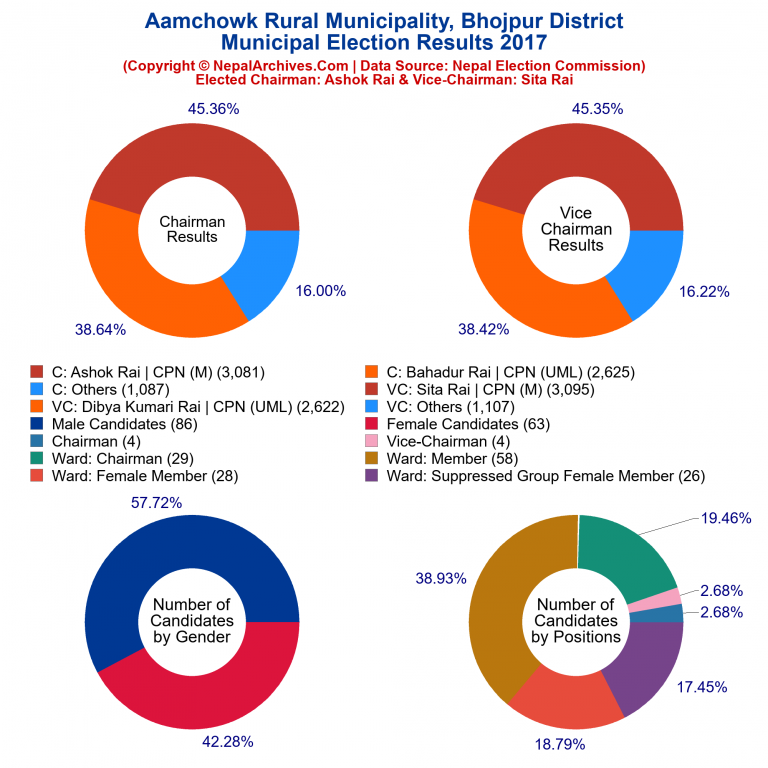In 2017 election of Aamchowk Rural Municipality (Bhojpur district), candidate Ashok Rai of Nepal Communist Party (Maoist) (CPN (M)) secured 3,081 (45.36%) votes out of total votes of 6,793 and was elected as a Chairman. The first runner-up candidate was Bahadur Rai of Nepal Communist Party (Unified Marxist-Leninist) (CPN (UML)) who secured 2,625 (26.58%) of votes. The rest of 2 candidates for the position of Chairman secured combined 1,087 (8.00) of votes.
Similarly, for the position of Vice-Chairman, candidate Sita Rai of Nepal Communist Party (Maoist) (CPN (M)) secured 3,095 (45.35%) and was elected as a Vice-Chairman, while Dibya Kumari Rai of Nepal Communist Party (Unified Marxist-Leninist) (CPN (UML)) secured 2,622 (26.43%) of votes and came in second position. Other 2 candidates who contested for Vice-Chairman secured combined 1,107 (8.11) of votes.

As illustrated in the pie chart, there were total 149 candidates contested in various positions with gender ratio of 86 (57.72%) males and 63 (42.28%) females. Moreover, there were total 29 candidates contested for ward chairman positions in 10 wards. Same as, total 58 candidates had contested for ward member positions while 28 females and 26 females from depressed group (dalit) had contested for female member position in each ward.
Similarly, for the position of Vice-Chairman, candidate Sita Rai of Nepal Communist Party (Maoist) (CPN (M)) secured 3,095 (45.35%) and was elected as a Vice-Chairman, while Dibya Kumari Rai of Nepal Communist Party (Unified Marxist-Leninist) (CPN (UML)) secured 2,622 (26.43%) of votes and came in second position. Other 2 candidates who contested for Vice-Chairman secured combined 1,107 (8.11) of votes.

As illustrated in the pie chart, there were total 149 candidates contested in various positions with gender ratio of 86 (57.72%) males and 63 (42.28%) females. Moreover, there were total 29 candidates contested for ward chairman positions in 10 wards. Same as, total 58 candidates had contested for ward member positions while 28 females and 26 females from depressed group (dalit) had contested for female member position in each ward.
